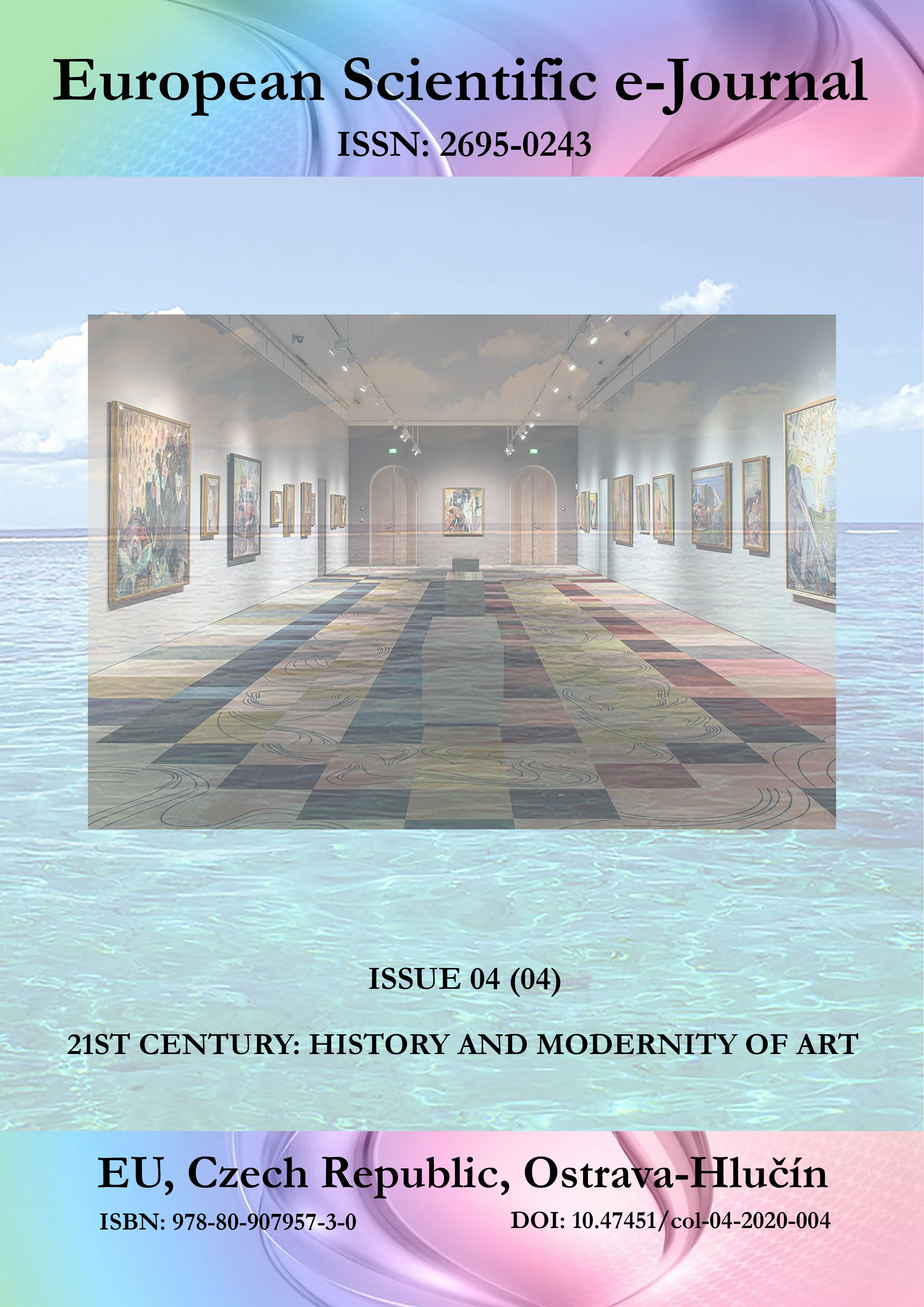Glass Art Objects – between Fine and Applied Art
DOI:
https://doi.org/10.47451/art2020-12-002Keywords:
fine art, applied art, art objects, glass art, contemporary artAbstract
The article describes the interrelationships that emerged between art, crafts, technology and design, in the period from the second half of the 19th century to the present day. Attention is paid to the classification of a work and the delineation of the category “Object.” The object of this research is contemporary art in the context of its classification as fine and applied in the period from the second half of the 19th century to the present day. Our attention will be focused on the glass material as a means of expression. The task of the research is to trace the metamorphoses that fine and applied art goes through and to what extent this is determined by the context in which the work lives.
Downloads
References
Battie, D., & Simon, C. (1991). Consise Encyclopedia of Glass. London: Octopus Limited.
Beveridge, P., Domenech, I., & Pascual, E. (2003). Warm glass. New York: Sterling Publishing Co.
Bray, C. (2001). Dictionary of Glass. London: A&C Black Publishers.
Cunningham, J. M. (2011, February 15). Britannica. Britannica. https://www.britannica.com/biography/Rene-Lalique
Drahotova, O. (1981). The Art of Glass in Europe. Madrid: Libsa.
Halem, H. (1993). Glass notes. Kent: Franklin Mills Press.
Lous Comfort Tiffany (2011, October 5). Morse Museum of American Art. Morse Museum. http://www.morsemuseum.org/louis-comfort-tiffany
Stefanov, Y. (2004). From aesthetics to sociology of art. Sofia: Askony. (In Bul.)
Valchev, K. (2004). Glass as Art. Sofia: NBU. (In Bul.)
Published
Issue
Section
License
Copyright (c) 2025 European Scientific e-Journal

This work is licensed under a Creative Commons Attribution 4.0 International License.
The European Scientific e-Journal (ESEJ) is an open access journal. Articles are available free of charge as PDF files on the website of the European Institute for Innovation Development. PDF files can be previewed with Acrobat Reader from www.adobe.com.
All articles of the “Tuculart Student Scientific” are published under a Creative Commons Attribution 4.0 Generic (CC BY 4.0) International license.
According to the Creative Commons Attribution 4.0 Generic (CC BY 4.0) International license, the users are free to Share — copy and redistribute the material in any medium or format for any purpose, even commercially (the licensor cannot revoke these freedoms as long as you follow the license terms).
Under the following terms:
- Attribution — You must give appropriate credit, provide a link to the license, and indicate if changes were made. You may do so in any reasonable manner, but not in any way that suggests the licensor endorses you or your use.
- No additional restrictions — You may not apply legal terms or technological measures that legally restrict others from doing anything the license permits.


